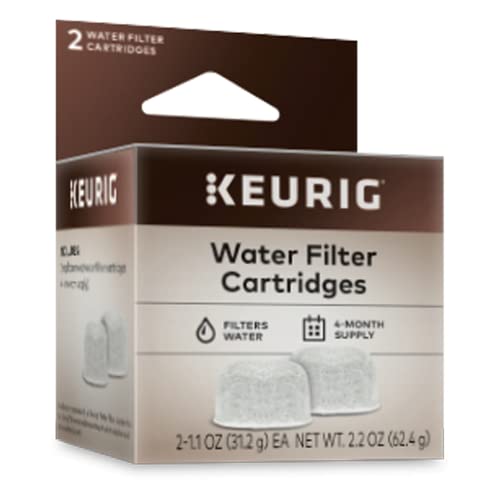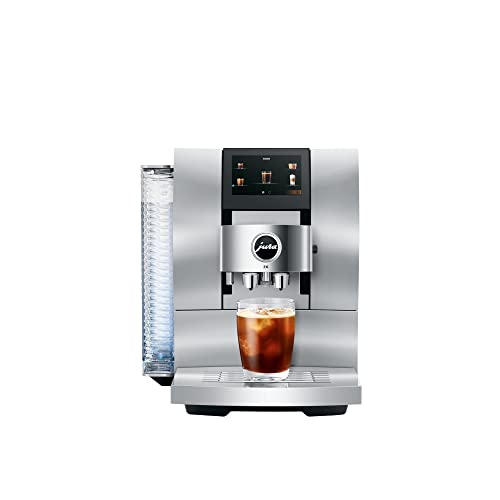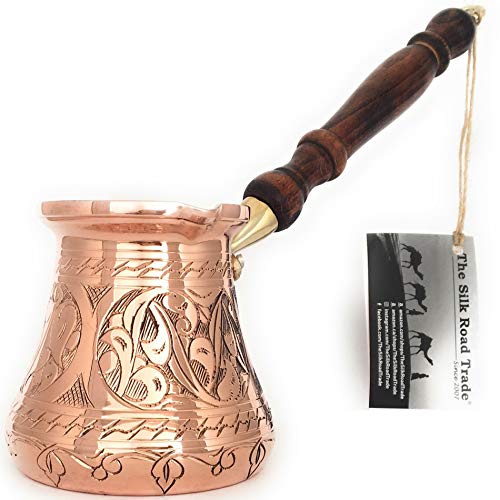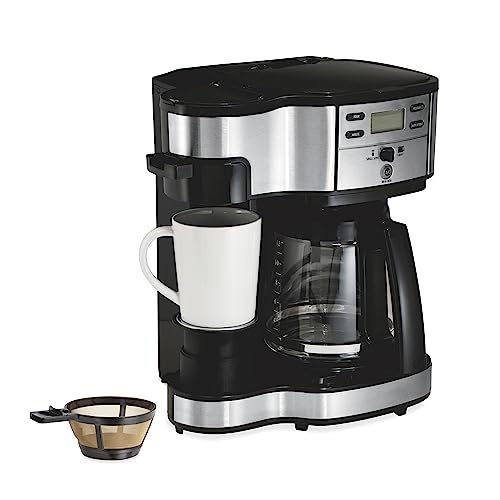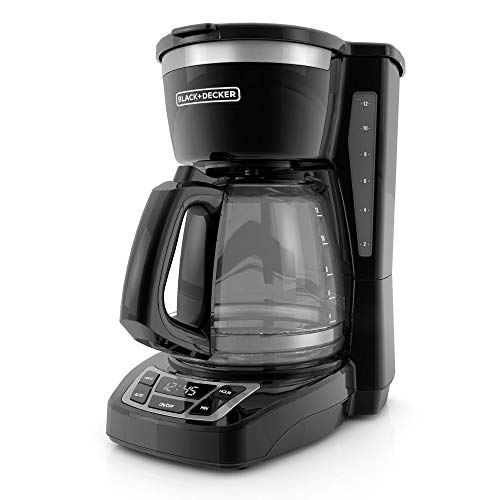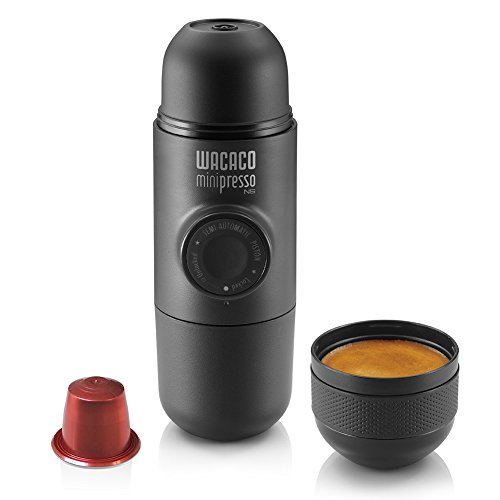- Why Should You Know How Ice Makers Work?
- What Are the Parts of an Ice Maker?
- How Does an Ice Maker Work?
- How Do Countertop Ice Makers Work?
- How to Make Ice Maker Work Faster
- FAQs
- Why does my ice maker work sometimes?
- How do pellet ice makers work?
- Are home ice makers worth it?
- How long does for an ice maker to work?
- How often do ice makers break?
- Why does my ice maker work intermittently?
- Why does an ice maker not work?
- Do ice makers keep ice frozen?
- Can I leave my ice maker on all the time?
- Do ice makers use a lot of electricity?
- What is the average life of an ice maker?
- How often should you empty an ice maker?
- Can ice makers grow mold?
- Conclusion
How Do Ice Makers Work?
Do you love those little square ice cubes that come in your drinks? They’re the perfect size for cocktails and keep your drink cold without watering it down. But have you ever wondered how they make those ice cubes? It’s a pretty cool process! Keep reading to learn more about how do ice makers work.
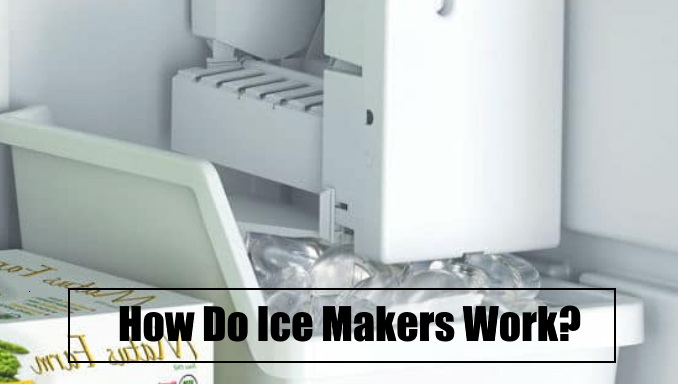
The ice machine is not complicated. It uses a simple system of freezing water and turning it into ice. The machine has a few essential parts, such as the freezing chamber, the condenser, and the evaporator. These parts work together to create ice.
When you know how the ice machine works, you can easily maintain and keep it running correctly. This is especially important for businesses that rely on their ice machines to keep their customers happy. Here are some of the benefits of knowing how the ice machine works:
Why Should You Know How Ice Makers Work?
1. You can troubleshoot problems more efficiently.
If you know how the ice machine works, you can narrow down the problem when it breaks down. This saves you time and money because you don’t have to call a repairer for every little issue.
2. You can maintain the machine more effectively.
If you know how the machine works, you can take better care of it. This means that you’ll extend its lifespan and get more use out of it. You’ll also save money on repairs and replacement parts.
3. You can make sure the ice is safe to eat.
The quality of the ice produced by your machine is essential. The ice can be contaminated with bacteria if you don’t maintain the machine properly. This is a health hazard, so it’s essential to ensure the machine is clean and working correctly.
4. You can keep your customers happy.
If you have an ice machine in your business, keeping it running smoothly is essential. Your customers will be happy if they can get their drinks with ice quickly and without problems.
5. You can avoid costly repairs.
If you keep your machine well-maintained, you’ll avoid expensive repairs. This is especially important for businesses that use their ice machines frequently.
Now that you know the benefits of knowing how ice makers work, it’s time to learn about the different parts of the machine and how they work together. So keep reading to get started!
What Are the Parts of an Ice Maker?
The water reservoir
The water reservoir is where the ice maker gets its water from. This can be a separate tank that needs to be refilled manually or connected to a water line for automatic filling.
The water reservoir in the ice maker is to provide a place for the ice maker to store water so that it can be used to make ice. The reservoir is usually made of plastic or metal under the ice maker. Keeping the reservoir clean is essential so the ice maker can function correctly.
When the ice maker is turned on, water from the reservoir is pumped into the ice maker and frozen into ice cubes. The ice cubes are then ejected from the ice maker into a storage bin. Therefore, the water reservoir must be refilled with water periodically so that the ice maker can continue to make ice.
It is essential to clean the water reservoir regularly to prevent bacteria from growing in it. Bacteria can cause the ice to taste bad and make people sick. To clean the reservoir, remove it from the ice maker and wash it with soap and water. Then, rinse it well and dry it before putting it back in the ice maker.
The Freezing Chamber
The freezing chamber is the part of the machine where the water is turned into ice. It’s usually made of stainless steel and has a series of coils inside. These coils are filled with refrigerant and cool the air in the chamber to below freezing.
The function of the Freezing Chamber is to lower the temperature of water to form ice. The thermostat monitors the freezing chamber’s temperature and turns off the power to the Freezing Chamber Heater when it reaches the set point. When the temperature in the Freezing Chamber rises above the set point, the thermostat turns on the power to the Freezing Chamber Heater.
The thermostat is a critical component of the ice maker, as it ensures that the freezing chamber maintains the correct temperature for ice formation. Without the thermostat, the ice maker would not be able to regulate the temperature properly, and ice would either not form or would form inconsistently.
If you notice that your ice maker is not producing ice or that the ice it is producing is inconsistent in size or shape, it could be a sign that the thermostat is not working correctly. If this is the case, you should have the ice maker serviced by a qualified technician.
The Condenser
The condenser is a set of coils that helps to remove the heat from the refrigerant. This keeps the refrigerant cold so it can continue to cool the air in the freezing chamber.
The condenser in the ice maker is responsible for cooling and condensing the refrigerant. First, the refrigerant is circulated through the condenser coils and cooled by the surrounding air. The cooled refrigerant then flows into the evaporator coils, absorbing heat from the surrounding air. This cooling and heating cycle helps keep the ice maker’s internal temperature stable and prevents the formation of ice crystals.
One important thing to note about the condenser is that it must be kept clean to work correctly. If the coils become dirty, they cannot cool the refrigerant effectively. This can cause the ice maker to malfunction and produce ice that is not as cold as it should be. It is essential to regularly clean the condenser coils to prevent this from happening.
The Evaporator
The evaporator is another set of coils where the water is turned into ice. It works by taking the heat from the water and transferring it to the refrigerant. This causes the water to freeze.
The evaporator is responsible for freezing the water in the ice maker. The water is circulated through the evaporator coils, which are cooled by the refrigerant. As the water cools, it begins to freeze and form ice cubes. The ice cubes are then ejected from the ice maker into a storage bin.
It is important to note that the evaporator coils must be kept clean for the ice maker to work correctly. If the coils become dirty, they will not be able to transfer the heat from the water effectively. This can cause the ice maker to malfunction and produce ice that is not as cold as it should be. It is essential to regularly clean the evaporator coils to prevent this from happening.
The Ice Mold
The ice mold is where the ice cubes are formed. It’s usually made of silicone or rubber and has a series of cavities that are the same size and shape as the ice cubes.
The function of The Ice Mold in the ice maker is to shape the ice into a uniform size and shape that is easy to dispense. Ice Mold is also responsible for even water distribution during the freezing process.
Ice Mold is an essential part of the ice maker because it helps to create evenly sized and shaped ice cubes. The mold also helps to distribute water evenly during the freezing process, which helps to prevent ice cubes from sticking together.
If your ice maker is not producing evenly-sized or shaped ice cubes, it is possible that the Ice Mold is damaged and needs to be replaced. You should also replace the Ice Mold if it becomes cracked or warped.
The Ice Crusher
The ice crusher helps break up the larger pieces of ice to fit into the mold. It’s usually located at the top of the machine so that gravity can help it do its job.
The function of The Ice Crusher in the ice maker is to grind the ice into smaller pieces so that it can be easily dispensed from the ice maker. The Ice Crusher comprises several parts, including a blade, a housing, and a motor. The blade is the Ice Crusher part that does the work of breaking up the ice. The housing is the part of the Ice Crusher that holds the blade in place. Finally, the motor is the part of the Ice Crusher that turns the blade.
However, not all ice machines have this part, as some models have a built-in ice crusher.
The Storage Bin
The storage bin is where the ice cubes are stored after making them. It’s usually located at the bottom of the machine so that gravity can help keep the ice cubes in place.
The function of The Storage Bin in the ice maker is to store the ice cubes until they are needed. The Storage Bin is usually made of plastic or metal and has a lid that helps keep the ice cubes from spilling out.
The Storage Bin is an integral part of the ice maker because it helps to keep the ice cubes from melting before they are used. It also helps to keep the ice cubes from getting dirty or contaminated.
If your ice maker does not have a Storage Bin, you can purchase one separately.
How Does an Ice Maker Work?
The water reservoir is the first part of the ice maker. This is where water from the tap is stored and goes through a filter to be sure it’s clean. The freezing chamber is what turns the water into ice. It’s a cold environment, typically around zero degrees Fahrenheit.
The water from the reservoir is pumped into the freezing chamber and then quickly frozen. The condenser is the ice maker part that helps to cool the air around the freezing chamber. This helps to keep the ice from melting too quickly.
Afterward, the evaporator is the part of the ice maker that produces the ice. It does this by taking the water from the freezing chamber and turning it into a vapor. This vapor is then turned back into a liquid, which forms ice.
The ice is then formed in the ice mold, which is the part of the ice maker where the ice is formed. The water from the evaporator is pumped into the mold and then frozen. The ice mold is typically made of metal or plastic and has various shapes and sizes.
The ice crusher is the part of the ice maker that breaks the ice into smaller pieces. This is done so that the ice can be used in various ways.
The storage bin is the last part of the ice maker. This is where the ice is stored until it’s needed. The storage bin is typically made of plastic or metal and can be either removable or permanent.
How Do Countertop Ice Makers Work?
Countertop ice makers are convenient appliances that can produce a large amount of ice quickly. They use a refrigerant to cool water, which then freezes and is collected in an ice tray. The ice is then dispensed into a storage bin or bag.
Most countertop ice makers have a built-in water reservoir, but some models require an external water source. As a result, the ice maker will need to be connected to a power source, and the unit should be level for it to work correctly.
Once the ice maker is turned on, the refrigerant will cool the water. The water will then freeze and will be collected in the ice tray. When the ice tray is complete, the ice will be dispensed into the storage bin or bag.
Most countertop ice makers have a timer that can be set for how long the ice should be made. The ice will usually be ready to use in about 15 minutes.
Countertop ice makers are a great way to have ice on hand without filling trays or bags with ice cubes. They are also convenient for parties or other events where much ice is needed.
How to Make Ice Maker Work Faster
You can do a few things to make your ice maker work faster:
- Check the freezer temperature. It should be set between 0 and 5 degrees Fahrenheit (-18 to -15 Celsius). If it’s set too low, the ice maker won’t be able to produce ice quickly.
- Make sure the water supply line isn’t kinked or frozen. If it is, the water won’t flow properly, and the ice maker will take longer to produce ice.
- Clean the ice maker frequently.
A buildup of dirt and dust can slow down the ice-making process. Finally, if your ice maker has a self-defrost function, ensure it’s turned on. This will help prevent ice from building up and slowing down the ice maker.
FAQs
Why does my ice maker work sometimes?
There are a few reasons why your ice maker might not always work. One possibility is that the ice maker is not getting enough water. Ensure that the water line to the ice maker is turned on and there is no blockage in the line. Another possibility is that the ice maker is not turned on. Check your ice maker’s manual for instructions on how to turn it on. Finally, your ice maker might need to be cleaned. A buildup of ice and frost can prevent the ice maker from working correctly. Again, cleaning the ice maker according to the manufacturer’s instructions can often fix this problem.
How do pellet ice makers work?
Pellet ice makers work by using a refrigerant to cool water, which then freezes and is collected in an ice tray. The ice is then dispensed into a storage bin or bag.
Most pellet ice makers have a built-in water reservoir, but some models require an external water source. As a result, the ice maker will need to be connected to a power source, and the unit should be level for it to work correctly.
Once the ice maker is turned on, the refrigerant will cool the water. The water will then freeze and will be collected in the ice tray. When the ice tray is complete, the ice will be dispensed into the storage bin or bag.
Most pellet ice makers have a timer to set how long the ice should be made. The ice will usually be ready to use in about 15 minutes.
Pellet ice makers are a great way to have ice on hand without filling trays or bags with ice cubes.
Are home ice makers worth it?
There are a few factors to consider when answering this question. First, how often do you entertain guests? A home ice maker can be a real lifesaver if you regularly have people over for parties or other gatherings. Having a steady supply of ice on hand means you’ll never have to worry about running out, and it can be a real time-saver when you’re trying to get everything ready for your guests.
Another thing to consider is how much ice you actually need. For example, if you only use ice occasionally, then you might not need a large-capacity ice maker. But a higher-capacity model might be a better choice if you use ice regularly.
Finally, you’ll need to decide what type of ice you prefer. Some people like the traditional cube-shaped ice, while others prefer the more sculpted “nugget” style. There are also ice makers that can produce both types of ice, so you’ll have to decide which one you prefer before making your final decision.
If you entertain often and need a lot of ice, then a home ice maker is probably worth the investment. But if you only use ice occasionally and don’t need a large-capacity model, you might be able to get by without one. Ultimately, deciding whether to buy an ice maker depends on your specific needs and preferences.
How long does for an ice maker to work?
It typically takes about 24 hours for an ice maker to work. However, this time may vary depending on the type of ice maker and the size of the unit. Additionally, it is essential to note that the first batch of ice may be smaller than subsequent batches.
How often do ice makers break?
Ice makers are one of the most commonly broken appliances in the home. They can break down for various reasons, but the most common reason is that they are used so frequently. If you use your ice maker regularly, it is essential to properly maintain it to prevent it from breaking. With proper maintenance, an ice maker should last for many years. However, if you do not adequately maintain your ice maker, it will likely break down sooner. Nevertheless, you can do a few things to properly maintain your ice maker and prevent it from breaking.
The first thing you need to do is clean your ice maker regularly. Ice makers can quickly become dirty, leading to them breaking down. Make sure you clean your ice maker at least once a week to prevent this from happening.
Another thing you can do to keep your ice maker from breaking is to check the seals and gaskets regularly. These are what keep the ice in the ice maker, and if they become damaged, it can cause the ice maker to break. So, check these seals and gaskets regularly to ensure they are in good condition.
If you notice that your ice maker is making noise, it is likely because it is beginning to break down. This is usually caused by a buildup of ice inside the ice maker. If you notice this, clean the ice maker immediately to prevent further damage.
If you follow these tips, you should be able to properly maintain your ice maker and prevent it from breaking. However, if your ice maker does break, you will need to replace it. Replacing an ice maker can be expensive, so it is essential to make sure a warranty covers you. This way, if your ice maker does break, you will not have to pay for the replacement out of pocket.
Why does my ice maker work intermittently?
There are a few reasons why your ice maker might be working intermittently. The most common reason is that the water supply to the ice maker is not turned on all the way or there is a leak in the water line. Another possibility is that the ice maker is not level, which can cause it to work erratically. Finally, the ice maker might be dirty or clogged, which can also cause it to work intermittently. If you’re unsure what is causing your ice maker to work intermittently, you should call a qualified repair person to diagnose and fix the problem.
Why does an ice maker not work?
There are several reasons why an ice maker may not work. The most common reason is a lack of water supply. First, ensure the ice maker’s water supply is turned on, and there is enough pressure. Another reason could be a frozen water line. Check the water line for any signs of freezing. If the water line is frozen, thaw it with a hair dryer or heat gun. Finally, make sure the ice maker is turned on. If it is turned off, turn it on and wait 24 hours for it to start making ice.
If you have followed all of these steps and the ice maker still does not work, there may be a problem. Contact a qualified technician to service the ice maker.
Do ice makers keep ice frozen?
Ice makers keep ice frozen by maintaining a cold temperature inside the ice maker. The ice maker is usually located in the refrigerator’s freezer section and has a thermostat that controls the temperature. When the thermostat senses that the temperature inside the ice maker has risen above freezing, it will turn on the cooling system to lower the temperature and keep the ice frozen.
Can I leave my ice maker on all the time?
Yes, you can leave your ice maker on all the time. However, if you do not use it regularly, turning it off is a good idea to save energy. If you turn it off, clean and dry the ice maker before turning it back on.
Do ice makers use a lot of electricity?
No, ice makers do not use a lot of electricity. They are one of the most energy-efficient appliances in your home. However, if you leave your ice maker on all the time, it will use more electricity than if you turn it off when you’re not using it.
What is the average life of an ice maker?
The average life of an ice maker is 10-15 years. However, this can vary depending on how often you use the ice maker and how well you maintain it. Proper maintenance is the key to prolonging the life of your ice maker.
How often should you empty an ice maker?
You should empty your ice maker every 2-3 days. This will prevent the ice from getting stale and the ice maker from working overtime.
Can ice makers grow mold?
Yes, ice makers can grow mold if they are not adequately cleaned. Mold can grow in the ice maker due to a buildup of bacteria and other contaminants. Use a vinegar solution and water to clean the ice maker and prevent mold growth. Run this solution through the ice maker once a month to keep it clean and free of mold.
Conclusion
In conclusion, ice makers work by using a simple yet effective process. First, water is pumped into the ice maker and frozen into ice cubes. Then, the ice cubes are released into the storage bin, and finally, they are dispensed into your glass. The entire process is controlled by a thermostat which regulates the temperature of the water and the ice.
An ice maker is a handy appliance in any home, and it’s relatively easy to learn how they work. The most important thing to remember is that ice makers need a constant water supply and electricity to function correctly. With that in mind, it’s pretty straightforward to figure out how ice makers work. Thanks for reading!
